Amazfit GTR 3
One-minute review
The Amazfit GTR 3 is a good-looking entry-level sports watch that delivers impressive performance for its modest price tag – but doesn't quite live up to all of Amazfit's lofty claims.
It has very respectable fitness tracking chops, with a huge selection of workout modes (six of which can be identified and start tracking automatically), accurate GPS tracking for outdoor training sessions, and dependable heart rate monitoring. The heart rate monitor wasn't quite as quick to respond to changes as we'd like to fast interval training sessions, but if you're new to working out then that's unlikely to be an issue.
Case diameter: 45.8mm
Weight (with strap): 43g
Display type: OLED
GPS: Yes
Sports modes: 150+
Operating system: Zepp OS
Recovery is a key part of training, so it's good to see Amazfit's excellent sleep tracking present and correct. With SpO2 monitoring enabled the watch accurately detects sleep stages and wakefulness, and even factors naps into its rest and recovery calculations.
The watch itself looks great too, with a slim case and aircraft-grade aluminum bezel in a choice of two smart neutral colors, and a superb AMOLED display. However, that excellent screen also puts a strain on the watch's battery, and in our tests it ran flat in the space of a week in fairly ordinary use. That was a surprise considering Amazfit claims 10-day battery life in heavy use – though it's far from shabby, and is on a par with Fitbit's AMOLED devices.
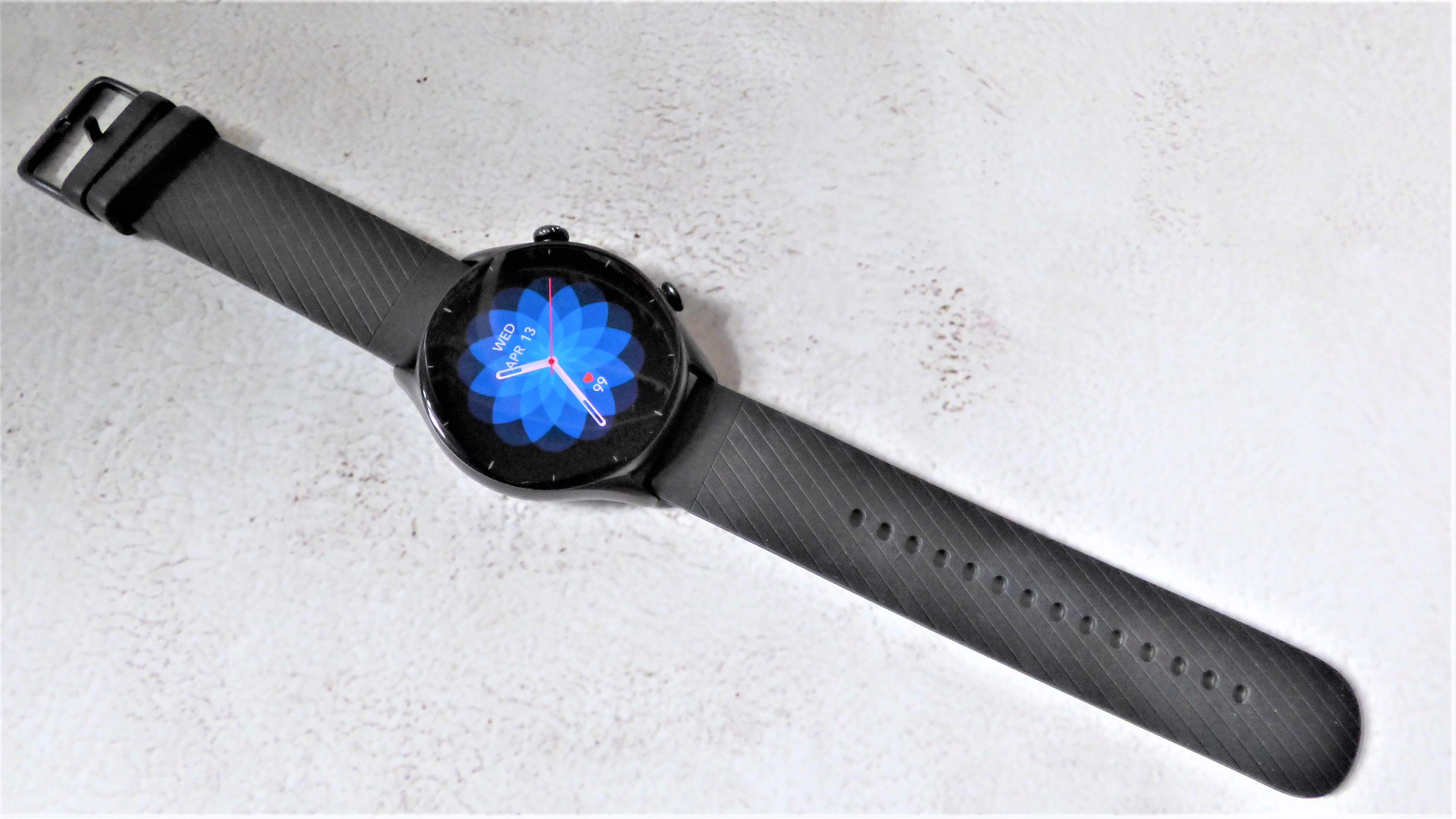
Price and release date
- Released October 2021
- Entry-level price
The Amazfit GTR 3 launched in October 2021 for $179.99 / £149 (about AU$240), which is a competitive price for a GPS running watch – particularly one with an OLED display. The Amazfit GTR 3 Pro, which landed on the same day, is slightly more expensive at $189.99 / £179 (about AU$260).
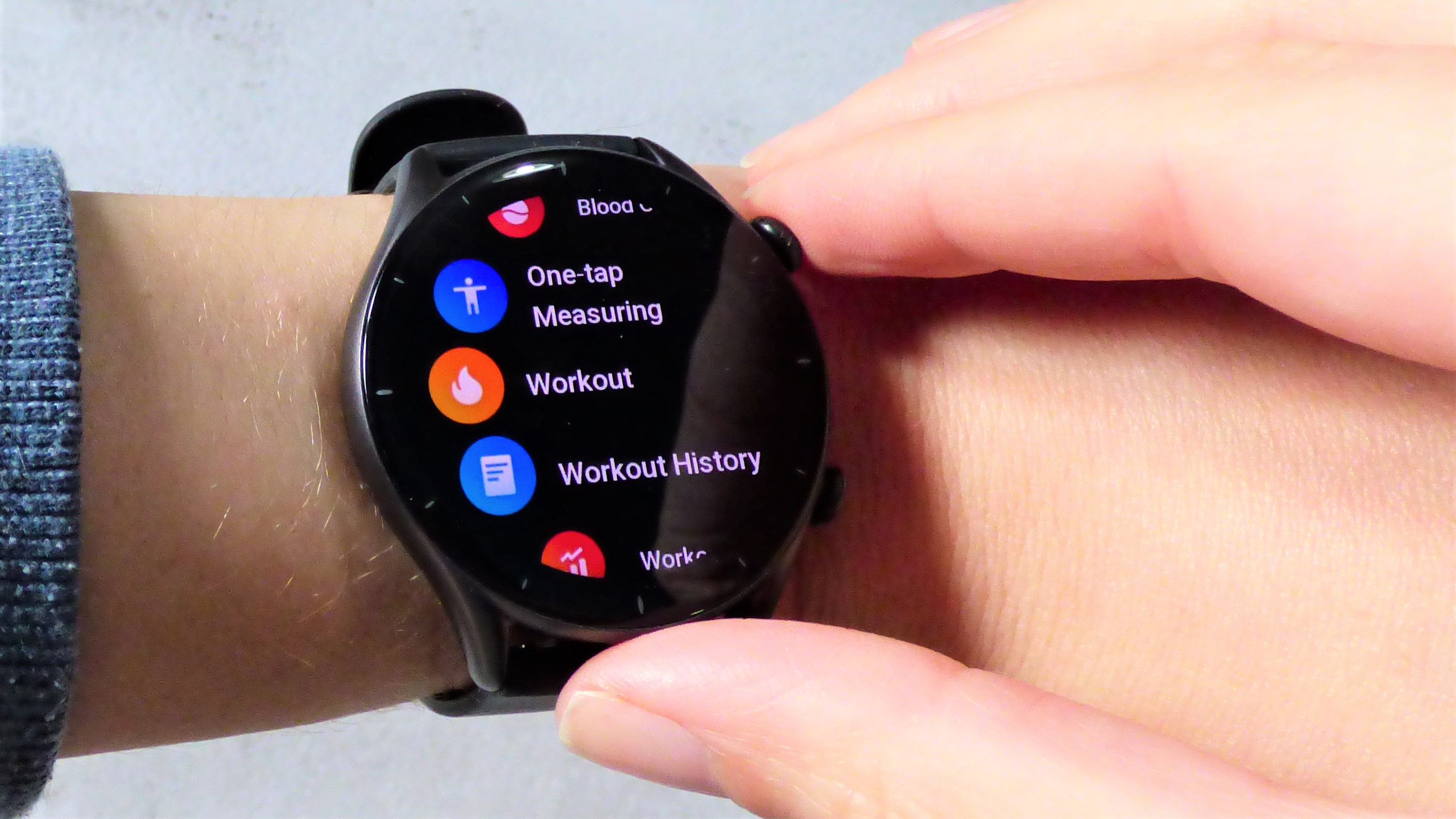
Design and display
- Lightweight design
- Resin and aluminum construction
- Slim case
The Amazfit GTR 3 has a streamlined design with a resin case and aircraft-grade aluminum bezel and lugs for a smarter look (many entry-level running watches have plastic lugs to save weight). It comes in two colorways, Thunder Black (as shown here) and Moonlight Gray, both of which have co-ordinating straps and cases.
Its case measures 45.8mm x 10.8mm and our review model weighed 43g including the silicone strap. That's a little more than the featherweight Coros Pace 2, but still very light, and the watch is slim enough to easily forget in daily wear.
The watch has two physical controls: a rotating dial that can be used to access and scroll through the main menu, and start and pause activities, and a button that provides quick access to the list of activity tracking modes. It's a layout that takes some getting used to (on most sports watches the lower button would take you back to the homescreen), but we appreciated the ability to start tracking a workout without drilling through multiple menus.
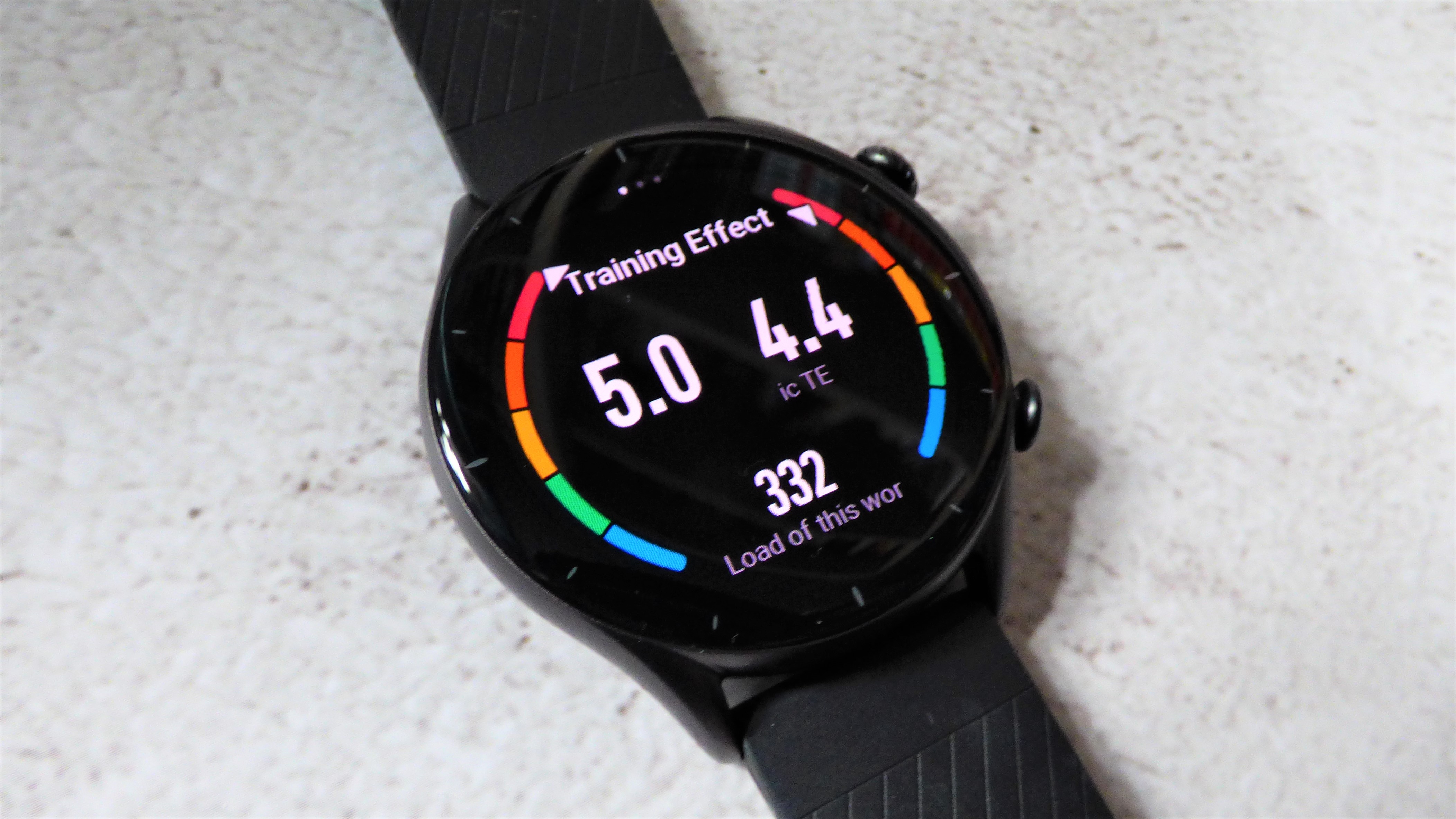
The watch's crowning glory is its bright OLED touchscreen display, which is bright and responsive, as we've come to expect from Amazfit's sports watches. It's impressive for a device at this price point and its high resolution means it's capable of showing lots of data at a glance. It's a shame the GTR 3 doesn't offer much in the way of maps or navigation, as its display would be ideally suited to it.
Battery life
- A week in typical usage with full features enabled
- Animated faces and always-on display drain power faster
- Shorter than Amazfit's quoted figures
Amazfit quotes a battery life of 21 days in typical usage for the GTR 3, or 10 days with heavy use, but in our tests it fell far short of even the latter figure.
As with any sports watch, using GPS tracking and heart rate monitoring will reduce battery life. Using animated watch faces (including the default one) will also drain power more quickly too, as will enabling always-on mode. However, in our testing we found always-on mode unnecessary as the watch woke reliably when we raised our wrist.
With an animated face and SpO2 tracking enabled, plus one tracked workout every other day, our watch's battery lasted almost exactly a week before it needed a charge. That's respectable, and on a par with many similarly priced watches, but far shorter than Amazfit's own numbers.
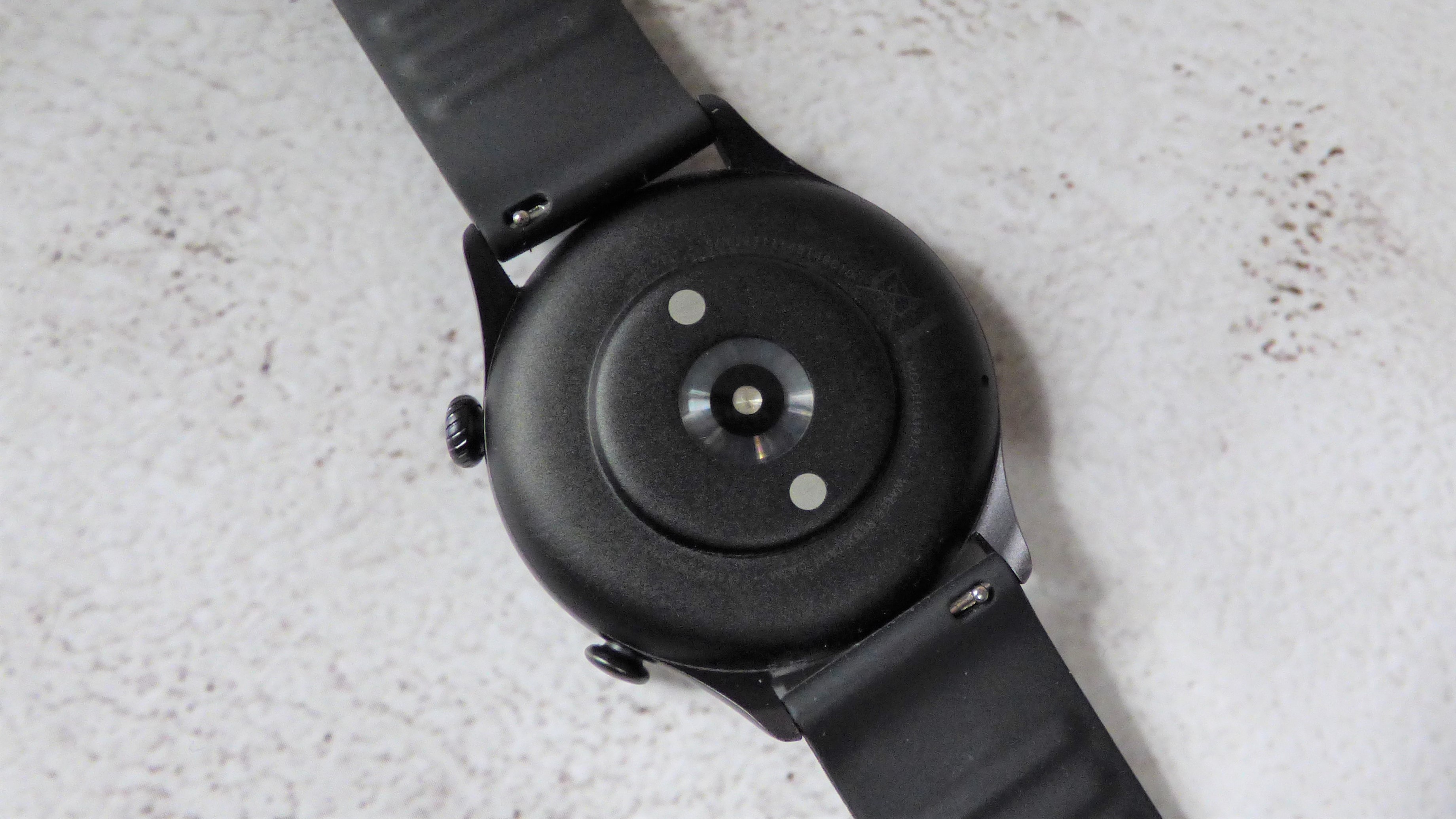
Smartwatch features
- Microphone for Alexa voice commands
- Remote controls for camera and music player
- Limited selection of apps to download
The GTR 3 runs Amazfit's proprietary operating system, and in our tests it provided smooth, mostly bug-free performance. The only downside we noticed was that animated faces seem to cause a little lag, though this might be a limitation of the watch's hardware as it's not something we observed when testing the GTR 3 Pro.
As you'd expect from a nascent operating system, there aren't too many extra tools available to download through Amazfit's store – only additional faces and a small set of health-related tools for tasks like reminding you to drink water, calculating your BMI, or checking for color blindness. Hopefully the selection will expand in the coming months and years, but it's a far cry from the variety offered by Garmin Connect IQ.
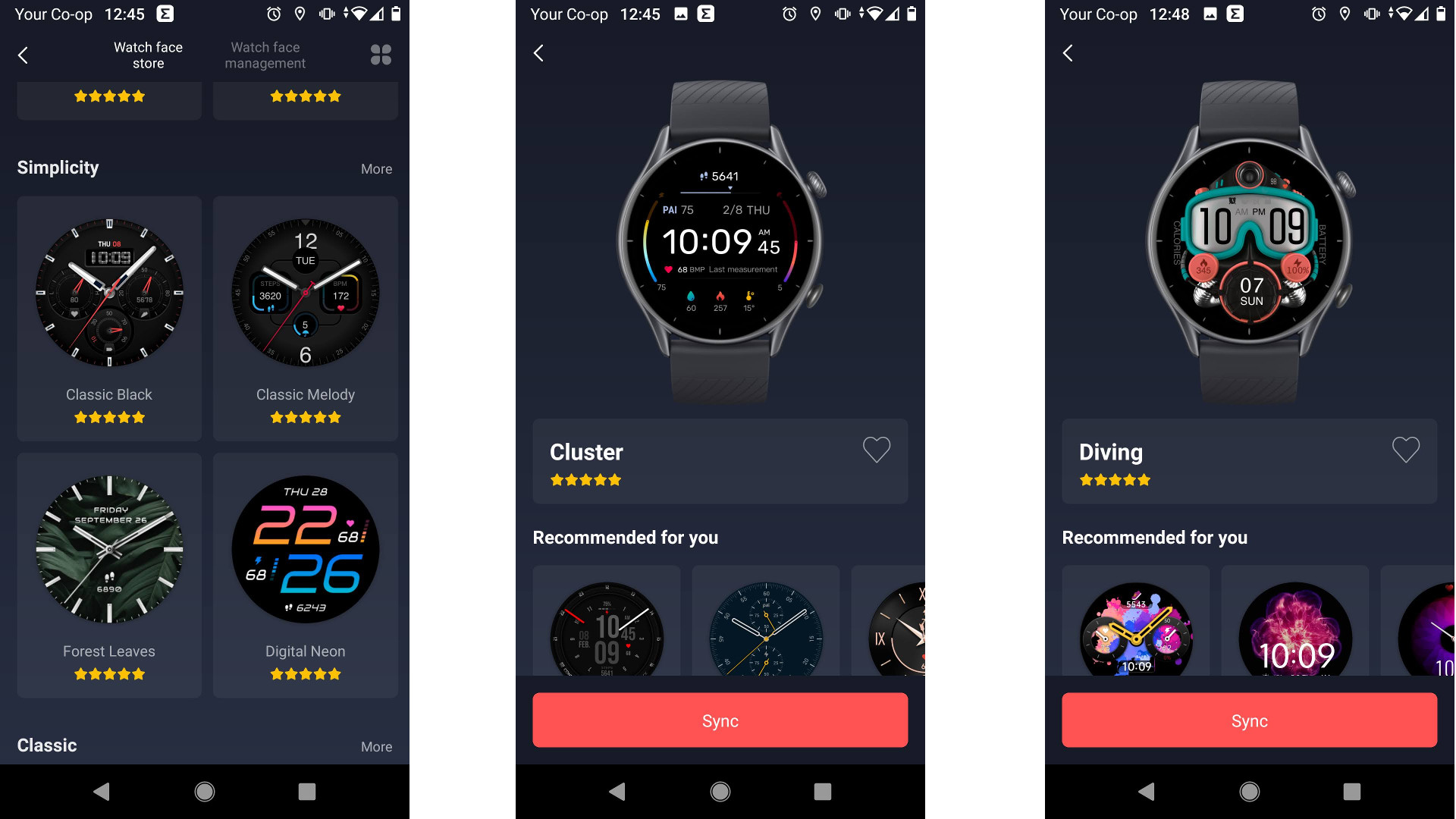
There's also a microphone, which allows you to use Amazon Alexa voice commands. It's a shame that you can't also make and receive phone calls via Bluetooth, but that would be a lot to ask from a watch in this price bracket. If that's an important feature for you, take a look at the similarly styled Garmin Venu 2 Plus instead.
There's no on-board storage for music, which is a shame, but you can control your phone's media player. There's also a remote to control your phone's camera app.
Surprisingly for a sports watch, the weather app is one of the most useful tools, providing a summary for the whole week ahead, plus advice on whether today's weather will be suitable for activities like outdoor workouts and fishing.
Fitness tracking
- Dependable GPS tracking for outdoor activities
- Heart rate monitoring reasonably, but not super responsive
- Designed with beginners in mind
Despite its vast range of activity tracking modes (there are some 150 to choose from), the Amazfit GTS 3 is very much an entry-level, accessible sports watch. Six of its workout modes can be identified and start tracking automatically (walking, indoor walking, outdoor running, treadmill, outdoor cycling, pool swimming, elliptical trainer, and rowing machine), which is great if you tend to be forgetful, but bear in mind that you'll need to set it up in the app first.
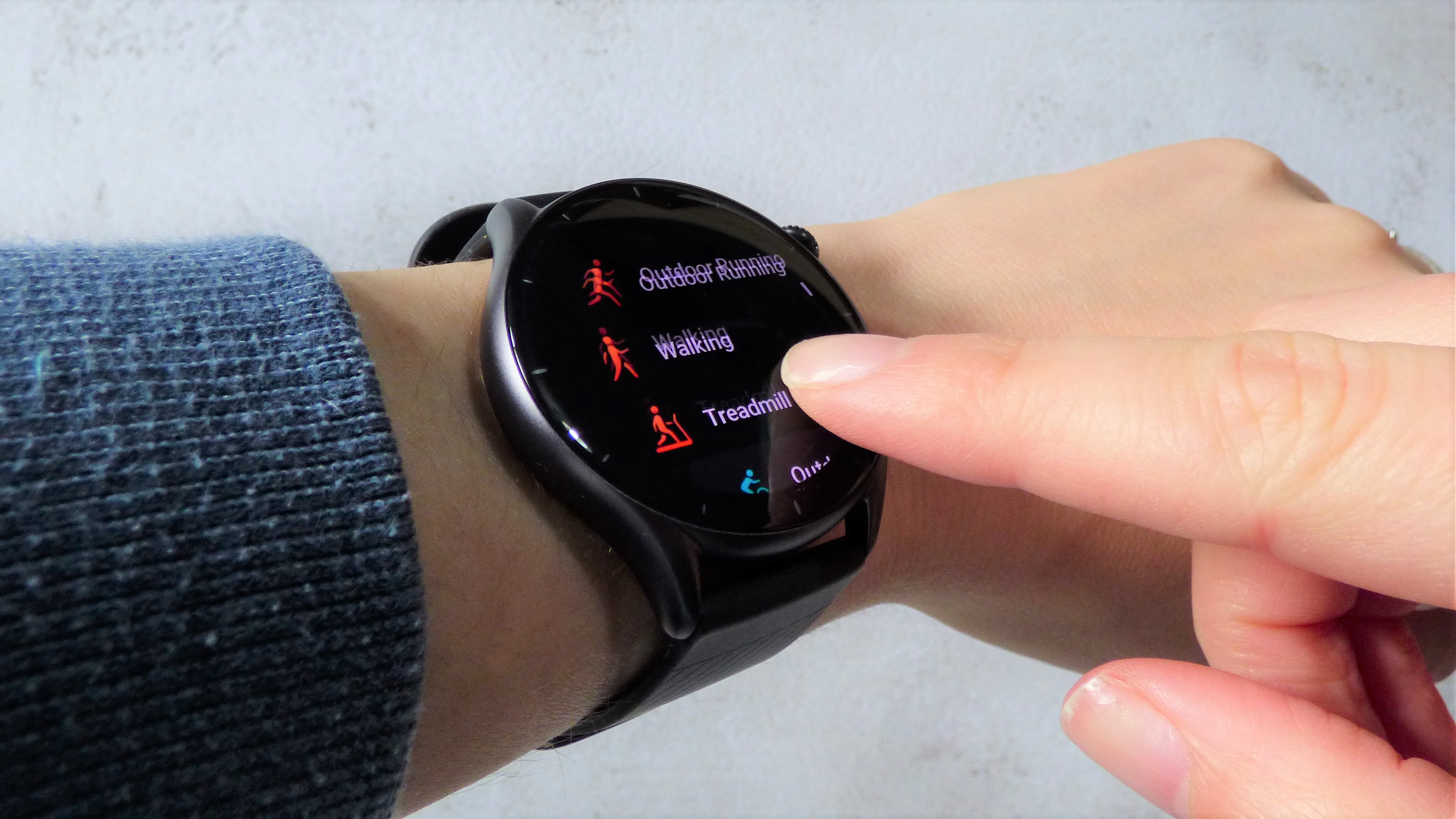
The watch's GPS proved impressive in our tests, plotting our pre-measured 5km route to within 200 meters (a difference that can be accounted for by the fact that it's on roads rather than a track). We found that automatic workout tracking took quite a while to kick in, though – Amazfit doesn't specify how long you'll need to be working out before it's enabled, but we found it took 10 minutes or so.
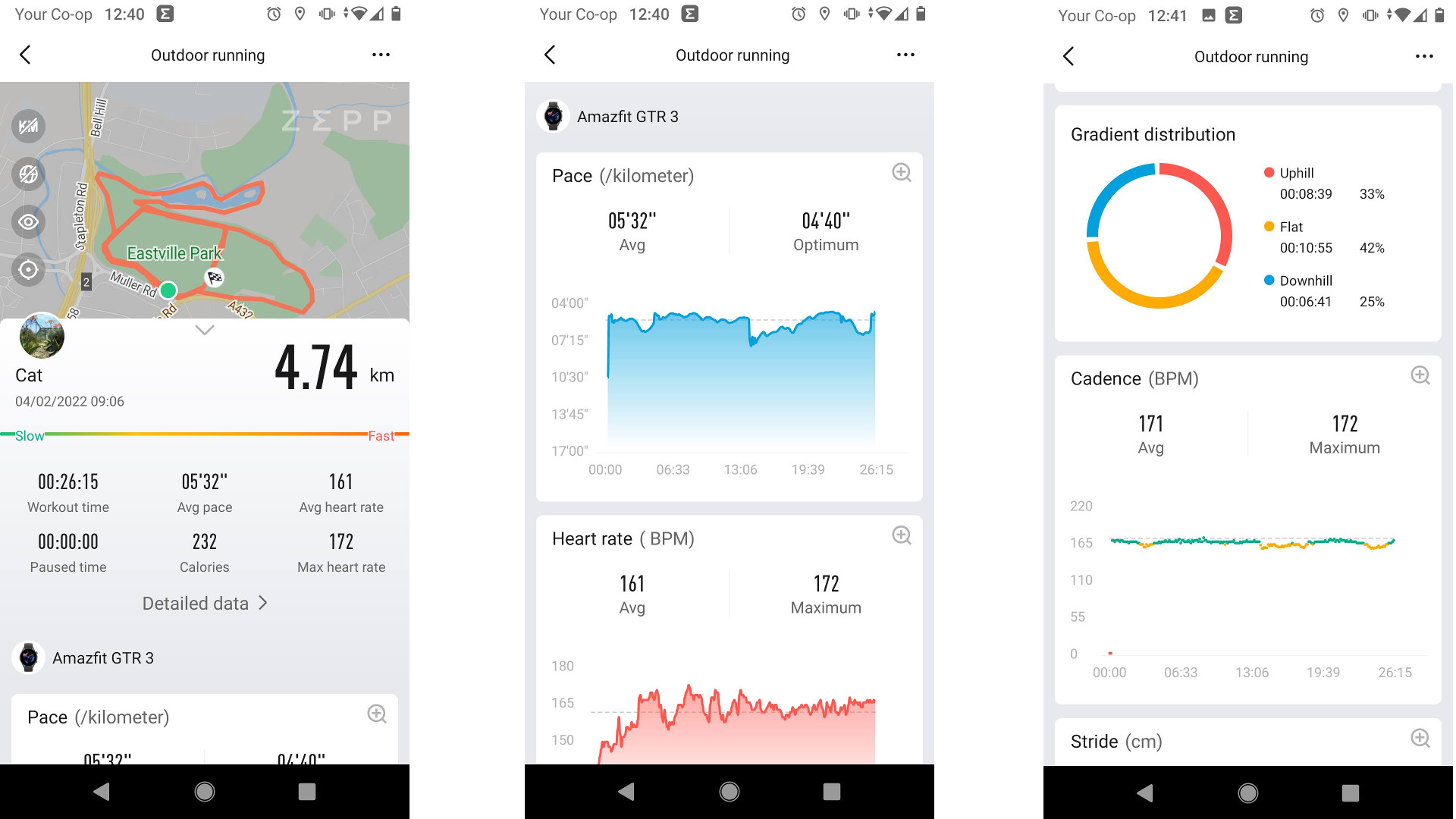
Heart rate tracking (the core of any sports watch) largely lined up with the figures recorded by our Garmin Fenix 7, and was fine for daily use and distance running. However, during an indoor cycling class, we found that the watch's heart rate monitor didn't respond to changes quite as rapidly as some higher-end sports watches. That's not likely to be much of an issue for runners starting their fitness journey, but is worth bearing in mind if you're interested in heart rate zone training.
Like all Amazfit watches, the GTR 3 collates and summarizes your heart rate stats from the last seven days into a single metric called PAI (Personal Activity Intelligence). The higher your heart rate, the more PAI you earn, and your goal is to maintain a consistent rolling score of at least 100.
It's not unlike Fitbit's Active Zone Minutes or the rings on an Apple Watch, in that it gives you a clear goal to aim for, but PAI has the advantage of being a single number that's extremely simple to understand. PAI too low today? Move more. It's as simple as that, and very handy if you're looking for a tool to help nudge you towards healthier habits rather than assist you in serious sports training.
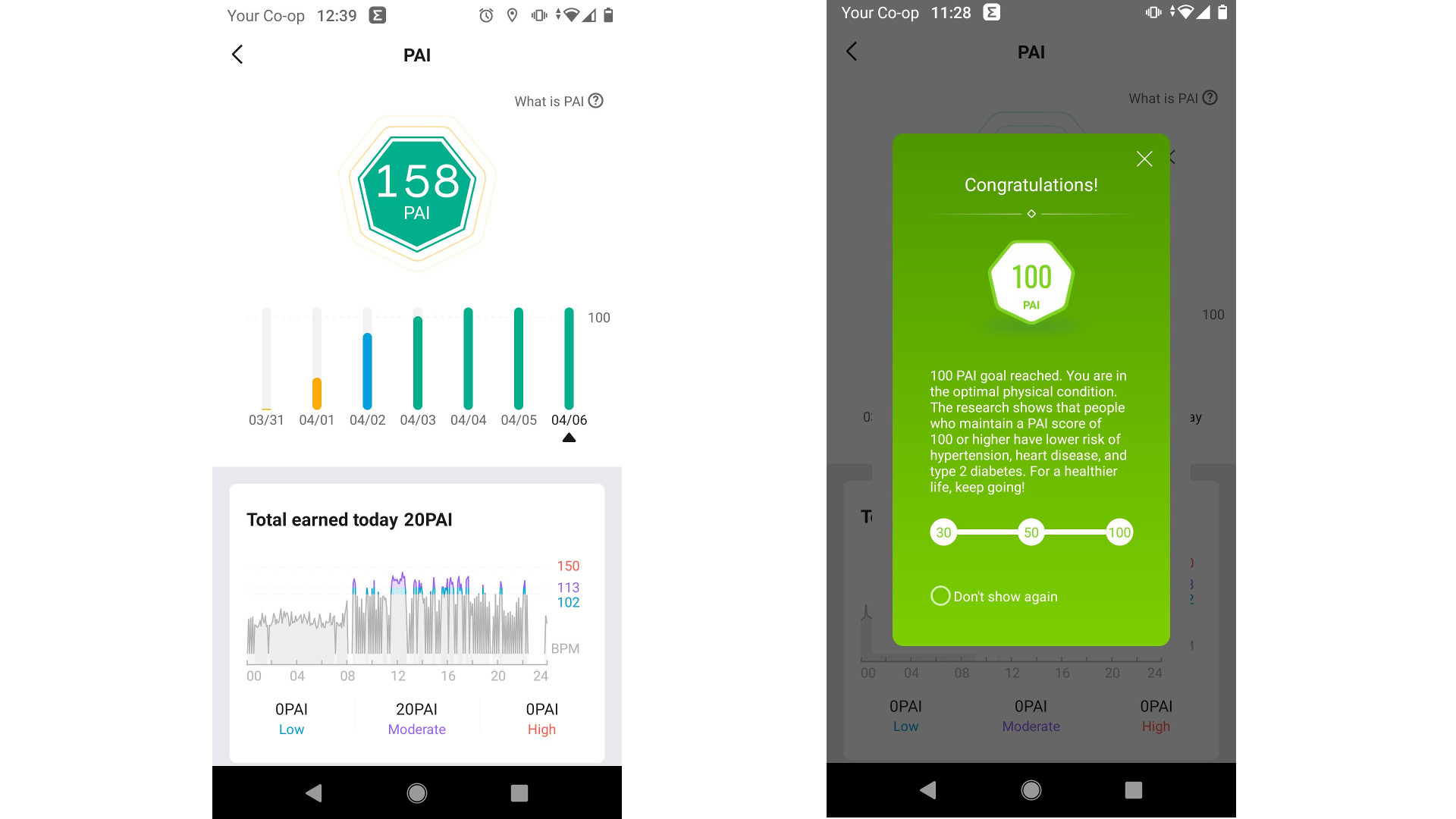
Before you start wearing the Amazfit GTS 3 regularly, it's well worth taking a moment to set up advanced sleep tracking with SpO2 monitoring. This puts a little extra strain on the battery, but is well worth it for the huge increase in accuracy (without it, the watch sometimes fails to differentiate between wakefulness and light sleep) and additional data on sleep stages, including REM sleep.
One major advantage of all Amazfit watches released in the last few years is their ability to track naps as well as nightly sleep (something even Garmin hasn't yet added). Taking a brief power-nap of around 20 minutes is encouraged, as long as you don't leave it too late in the day, and will be added to your sleep score.
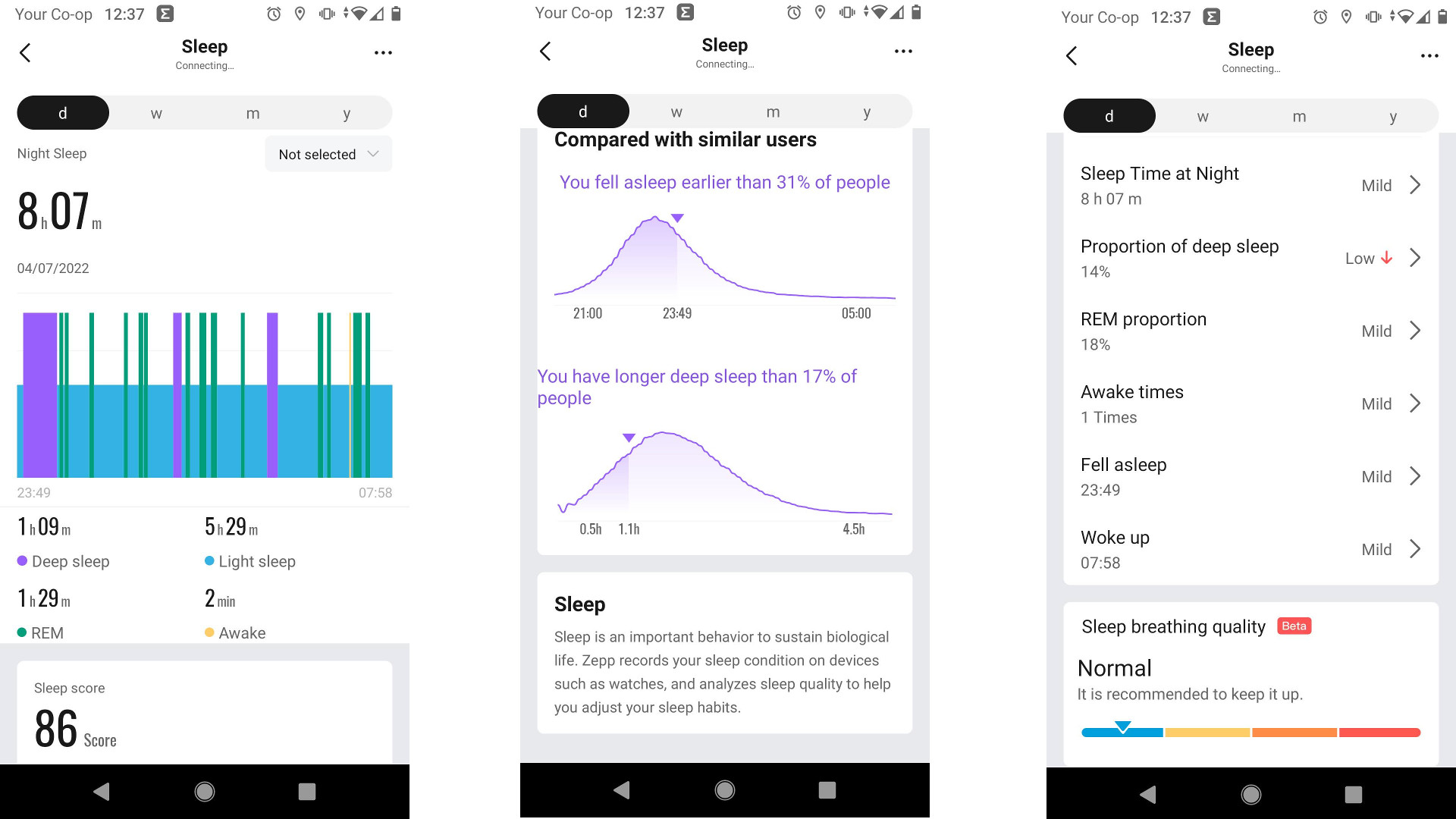
0 comments:
Post a Comment